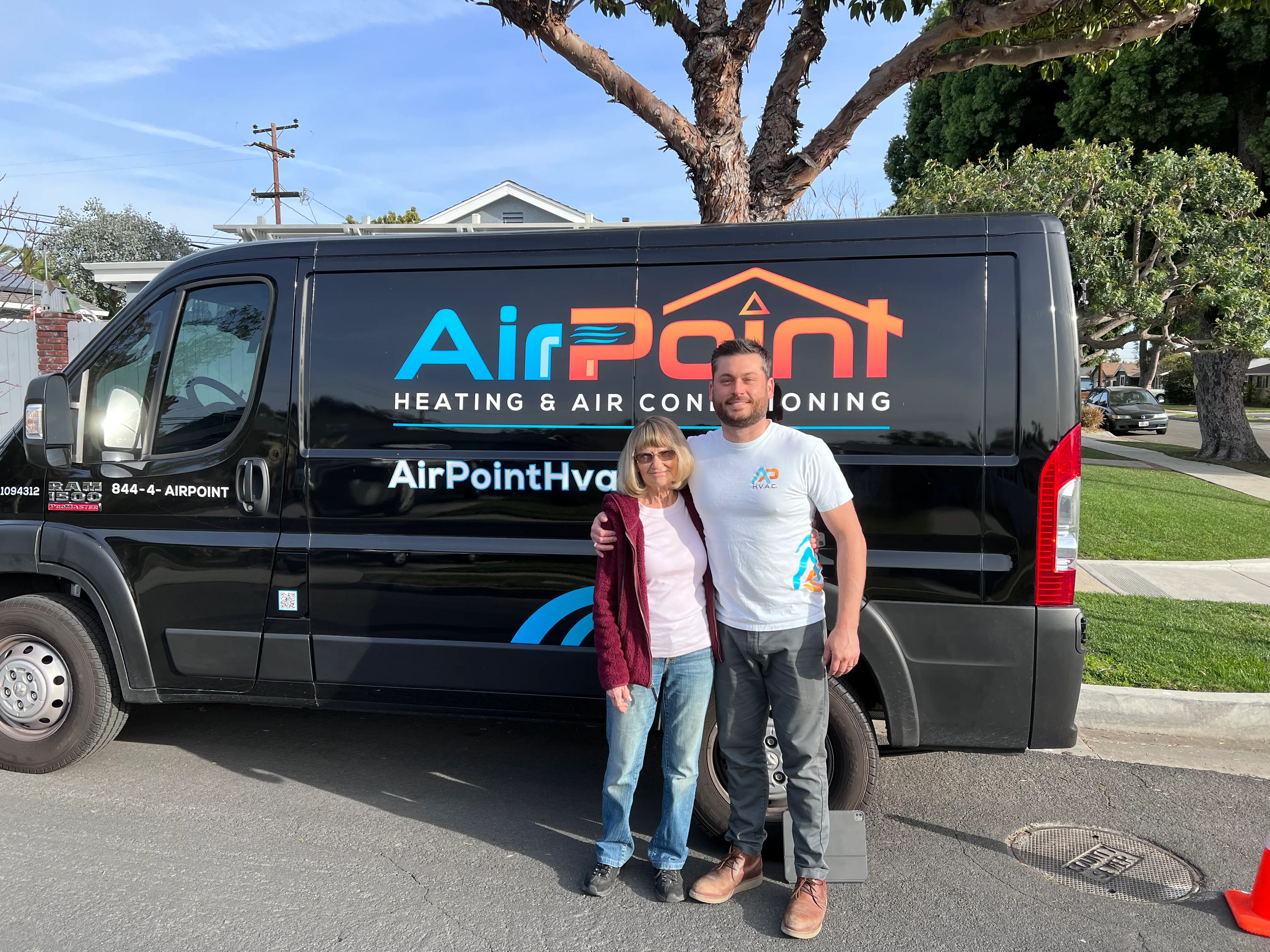
Why Huntington Beach Air Quality Matters for Your Health
Huntington Beach air quality is currently rated as "Good" with an Air Quality Index (AQI) of 31, making it safe for outdoor activities and daily life.
Quick Air Quality Facts:
- Current AQI: 31 (Good)
- Main Pollutant: Ozone (O3)
- PM2.5 Level: 8.91 µg/m³
- Annual Average: 47 AQI
- Health Risk: Little to no risk for most people
Living near the coast in Huntington Beach means you get to enjoy ocean breezes and outdoor activities year-round. But understanding your local air quality helps us make smart decisions about when to exercise outside, when to keep windows open, and how to protect our family's health.
The good news? Huntington Beach typically enjoys satisfactory air quality with low pollution levels. However, like most of Southern California, we occasionally face challenges from ozone, wildfire smoke, and seasonal allergens like oak and pine pollen.
Whether you're planning a beach run, considering outdoor dining, or deciding if it's a good day to air out your home, knowing how to read and respond to air quality data keeps you and your family healthier and more comfortable.
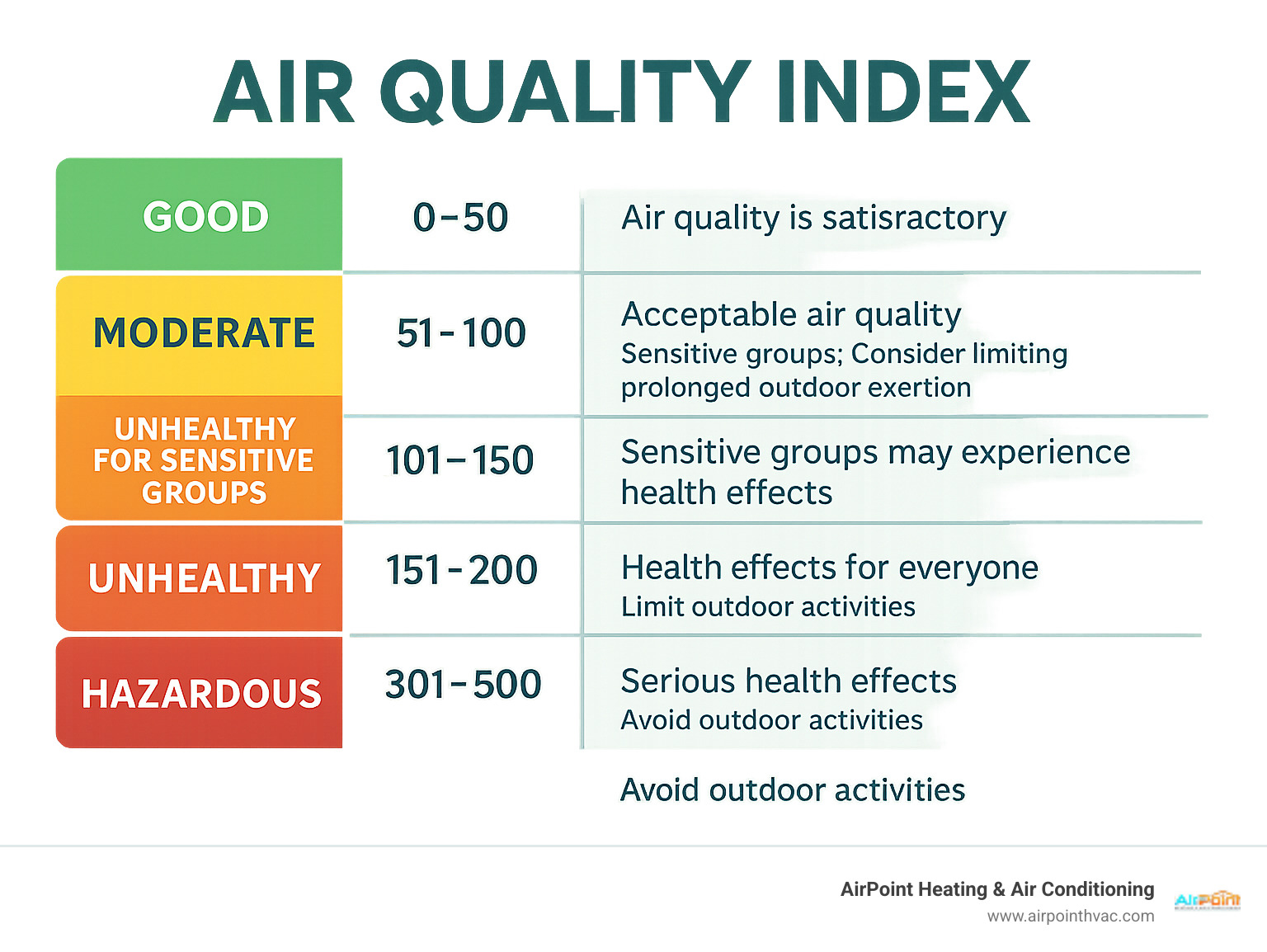
Understanding Huntington Beach Air Quality: The Key Numbers
When you're planning your day in Huntington Beach, understanding the Huntington Beach air quality numbers can help you make smarter choices about outdoor activities. Think of the Air Quality Index (AQI) as your daily air forecast – it tells you at a glance whether it's a great day for that beach run or if you might want to keep the windows closed.
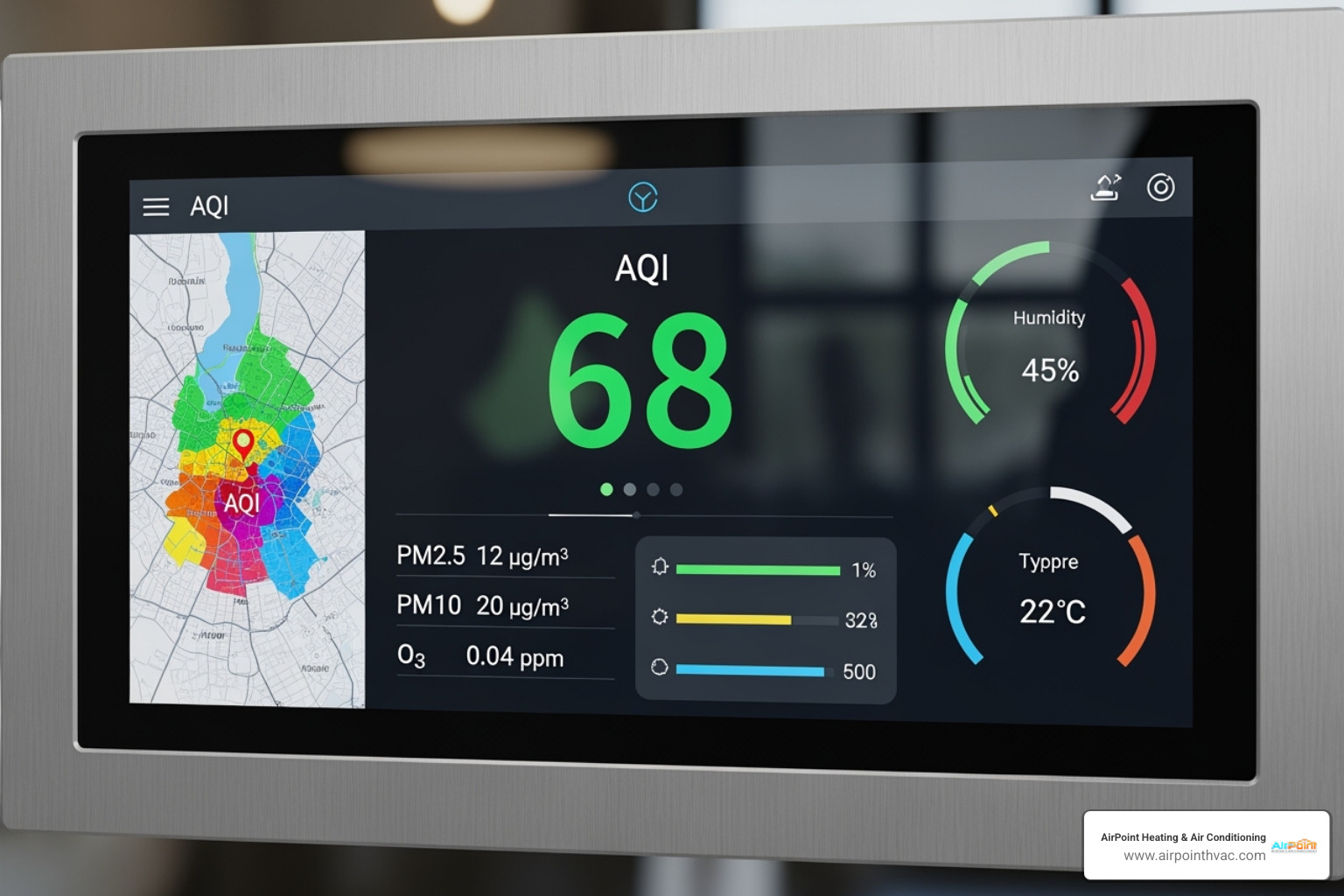
What's the Current Huntington Beach Air Quality?
Right now, we're enjoying excellent air quality with an AQI of 31, which puts us firmly in the "Good" category. This means you can breathe easy – literally! The air poses little to no health risk for most people, making it a perfect day for outdoor activities.
The main pollutant we're keeping an eye on today is ozone (O3), sitting at comfortable levels around 29.87 µg/m³. Ozone tends to be our biggest concern during hot, sunny Southern California days, but current levels are well within the safe range.
Our PM2.5 levels are also looking great at 8.91 µg/m³. These tiny particles are small enough to get deep into your lungs, so it's good news that they're staying low. The slightly larger PM10 particles are at 28.0 µg/m³, while nitrogen dioxide measures 26.6 µg/m³ and carbon monoxide sits at 290 µg/m³. All of these numbers fall comfortably in the "Good" range.
Looking at the bigger picture, Huntington Beach maintains an annual average AQI of 47, which means we consistently enjoy healthy air throughout the year. That's one of the perks of coastal living! For a deeper understanding of how these numbers affect your daily life, check out what the AQI scale means for your health.
Why Do Different Air Quality Readings Exist?
Ever notice that different apps or websites show slightly different air quality numbers for the same day? Don't worry – you're not seeing things! Just like checking multiple weather apps might give you slightly different temperatures, Huntington Beach air quality readings can vary between sources for perfectly normal reasons.
Location makes a big difference. Air quality monitors are scattered throughout the city, and each one tells the story of its specific neighborhood. A sensor near the Pacific Coast Highway might pick up more vehicle emissions, while one closer to the beach could benefit from those refreshing ocean breezes. Even a few miles can make a noticeable difference in readings.
Different sensors, different stories. Some monitoring networks use high-end government equipment, while others rely on community-based sensors like PurpleAir. Both are valuable, but they might be calibrated slightly differently or have varying levels of precision. It's like comparing a professional weather station to your backyard thermometer – both give useful information, but with different levels of detail.
The math behind the numbers varies too. Each service might calculate their final AQI using slightly different methods, averaging data over different time periods, or weighing certain pollutants differently. Some show you real-time, minute-by-minute updates, while others prefer hourly or daily averages.
Weather patterns add another layer of complexity. A sudden wind shift or temperature change can create pockets of cleaner or more polluted air, causing temporary differences between monitoring locations.
The good news? While individual readings might vary slightly, they generally paint the same overall picture. When multiple sources show "Good" air quality, you can confidently plan that outdoor barbecue. It's when several sources start showing "Moderate" or "Unhealthy" readings that it's time to pay closer attention and maybe move the party indoors.
The Main Culprits: Pollutants, Pollen, and Their Sources
Even though Huntington Beach air quality is generally excellent, understanding what can affect our local air helps us make smarter choices for our health and comfort. Think of it like understanding weather patterns – the more you know, the better you can plan your day!

Common Pollutants in Our Air
The air we breathe is a complex mix, and while Huntington Beach air quality stays remarkably clean, it's worth knowing what we're monitoring. Picture air pollution as an unwelcome cocktail of different ingredients, each with its own personality and effects.
PM2.5 (Fine Particulate Matter) are the ninja particles of air pollution – incredibly tiny at just 30 times smaller than a human hair! These microscopic troublemakers slip past our body's natural defenses and can sneak deep into our lungs and bloodstream. They come from vehicle exhaust, industrial emissions, and wildfire smoke. In Huntington Beach, we're fortunate to see low levels around 8.91 µg/m³, but when they do spike, they can trigger asthma flares and heart problems in sensitive folks.
PM10 (Coarse Particulate Matter) are PM2.5's slightly bigger cousins, still small enough to cause trouble but not quite as sneaky. They come from dust kicked up by construction, road traffic, and even ocean salt spray. At around 28.0 µg/m³ locally, they're usually well-behaved, but can still irritate your throat and lungs on bad days.
Ozone (O3) is often our main concern in Huntington Beach, currently sitting at about 29.87 µg/m³. This isn't the protective ozone layer up in space – this is ground-level ozone that forms when vehicle emissions and industrial pollutants get cooked by our beautiful California sunshine. It's the main ingredient in smog and can make your chest feel tight or cause that scratchy throat feeling after a long beach walk on hazy days.
Nitrogen Dioxide (NO2) mostly comes from all those cars cruising down Pacific Coast Highway and other busy roads. At 26.6 µg/m³, it's typically low here, but it's worth watching because it can worsen asthma symptoms and help create more ozone. Kids seem especially sensitive to this one.
Carbon Monoxide (CO) is the silent type – colorless and odorless, mainly from vehicle exhaust and incomplete fuel burning. Our levels around 290 µg/m³ are reassuringly low, which is great news since CO can reduce oxygen delivery throughout your body.
Sulfur Dioxide (SO2) rounds out our usual suspects at just 1.43 µg/m³. This gas mostly comes from power plants and industrial facilities burning fossil fuels. The good news? It's barely detectable in our coastal paradise.
The Pacific Coast Highway and regional industrial activities contribute to these pollutants, but our ocean breezes often help sweep them away. Even distant wildfires can affect our air quality, as smoke can travel hundreds of miles on wind currents.
The Role of Pollen and Allergens
Nature has its own way of affecting our air quality, and it doesn't always play nice with our sinuses! While pollen isn't technically "pollution," it can make you feel just as miserable – sometimes even worse.
Oak pollen and pine pollen are our main seasonal troublemakers in Huntington Beach. When these trees decide to reproduce, they release clouds of pollen that can turn cars yellow and send allergy sufferers running for tissues. The timing varies, but spring typically brings the heaviest pollen loads.
Allergy symptoms from pollen feel different from pollution-related problems. Pollen usually triggers that classic combo of sneezing, runny nose, itchy watery eyes, and general misery that comes and goes with the seasons. Air pollution, on the other hand, tends to cause more chest tightness, coughing, and breathing difficulties that aren't necessarily seasonal.
Here's where it gets tricky – sometimes you'll get hit with both pollen and air pollution at the same time, creating a perfect storm for your respiratory system. On these days, even people who don't usually have breathing problems might notice some discomfort.
The key is learning to tell the difference. If your eyes are itchy and you're sneezing like crazy during spring, that's probably pollen. If you're feeling short of breath or your chest feels tight on a hazy day, that's more likely air quality related.
Long-Term Trends and Local Initiatives
Looking at the bigger picture, Huntington Beach air quality has a reassuring track record. Our annual average AQI of 47 keeps us firmly in the "Good" category year after year, which means most of us can breathe easy most of the time.
The South Coast Air Quality Management District (SCAQMD) works tirelessly behind the scenes to keep our air clean through regulations on vehicle emissions, industrial standards, and innovative clean technology programs. While we don't see their work day-to-day, their efforts help maintain the air quality we enjoy.
Local regulations and community efforts continue to evolve, focusing on reducing vehicle emissions, promoting cleaner industrial processes, and preparing for challenges like wildfire smoke. These ongoing initiatives, combined with our fortunate coastal location where ocean breezes help disperse pollutants, contribute to our consistently good air quality.
For more detailed information about air quality science and monitoring efforts, you can explore general information on air quality to understand how these various factors work together to keep our coastal air relatively clean and healthy.
Health Impacts and Safety Recommendations
Understanding the numbers is one thing, but knowing what they mean for our health and how to act on them is truly empowering. Even with generally good Huntington Beach air quality, there are times when we need to be extra mindful – and it's always smart to know how to protect ourselves and our families.
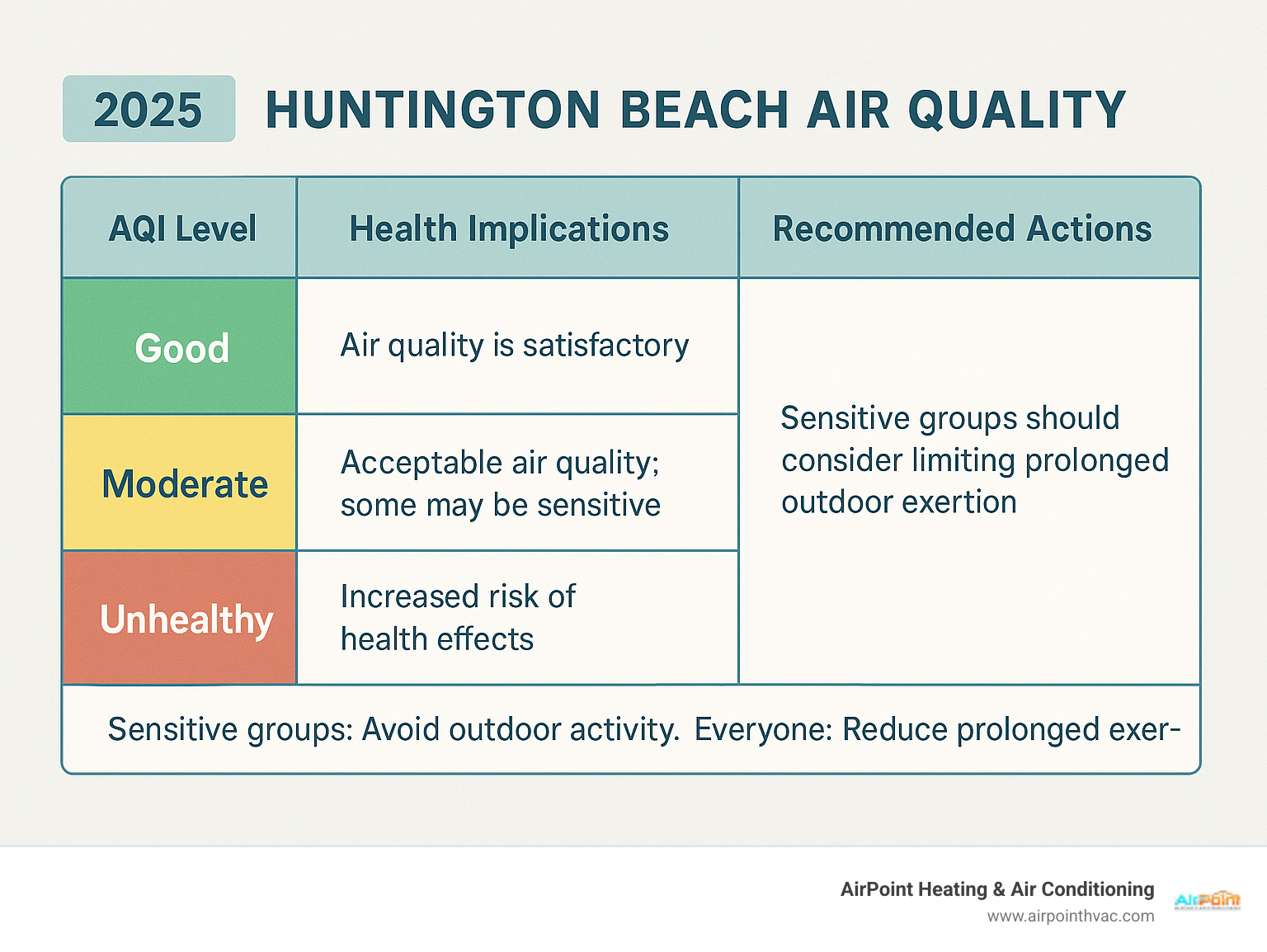
Protecting Your Health from Poor Air Quality
While Huntington Beach enjoys mostly "Good" air quality, it's worth understanding what happens when the air isn't quite as clean. Think of it like knowing first aid – you hope you'll never need it, but you'll be glad you're prepared if you do.
When air quality dips, our bodies feel it first through our respiratory system. You might notice more coughing, wheezing, or feeling short of breath during your usual activities. For folks with asthma, poor air can trigger flare-ups and make breathing more difficult. Even healthy people might find themselves more susceptible to respiratory infections when pollution levels rise.
Our cardiovascular system also takes a hit from polluted air. If you or a loved one has heart conditions, increased pollution can be especially concerning. High pollutant levels have been linked to heart attacks, strokes, and irregular heartbeats – which is why staying informed about air quality is so important.
Some of us are more vulnerable than others to air pollution. Children are particularly sensitive because their lungs are still developing, and they breathe more air relative to their body size. Elderly residents often have existing health conditions that make them more susceptible to pollution's effects. If you have respiratory diseases like asthma or emphysema, or heart disease, you'll want to pay extra attention to daily air quality reports. Even if you're perfectly healthy but work or exercise outdoors regularly, prolonged exposure can increase your risk over time.
Here's something many people don't realize: even low levels of pollution can have cumulative effects over the years. That's why maintaining good indoor air quality is so valuable for your family's long-term health. When outdoor air isn't ideal – or even just for everyday peace of mind – improving your home's air with filtration can make a real difference in how you feel day to day.
Guidelines for Outdoor Activities
The beauty of living in Huntington Beach is that we can enjoy outdoor activities year-round. When Huntington Beach air quality shows that familiar "Good" rating (AQI 0-50), you're free to accept all your favorite outdoor trips without worry. Go ahead and take that morning beach run, plan that family barbecue, or let the kids spend hours at the playground.
But what about those occasional days when the AQI creeps higher? Don't worry – a little planning goes a long way.
Checking daily forecasts should become as routine as checking the weather. Apps like AccuWeather or Plume Labs give you real-time updates, so you'll know exactly what you're dealing with before stepping outside. It's especially important if anyone in your family falls into those sensitive groups we mentioned.
When air quality moves into the "Moderate" range or higher, it's time to limit strenuous exercise. This doesn't mean you're stuck indoors – just consider dialing back the intensity or duration of your workout. During heavy exercise, we breathe more deeply and rapidly, which means we're pulling more pollutants into our lungs.
Timing can make a big difference too. Air pollution levels, particularly ozone, often peak during those sunny afternoon hours when we're most tempted to be active. Particulate matter tends to be higher during rush hour traffic. Early mornings or evenings are often your best bet for cleaner air when pollution levels are liftd.
Children and pets deserve extra consideration on poor air days. Kids are more vulnerable to pollution's effects, so limiting their outdoor playtime when air quality dips is a smart move. Don't forget about your furry family members – they can be affected by poor air quality too, and they're breathing closer to the ground where some pollutants concentrate.
When the air quality really takes a turn for the worse, having comfortable indoor alternatives becomes crucial. This is where a well-maintained home environment shines. Making sure your home's climate control system is ready for those "stay inside" days can turn a potentially frustrating situation into a cozy opportunity for indoor family time. We're here to help ensure your AC is ready for indoor days when outdoor air quality isn't cooperating.
Improving Your Indoor Air When Outdoor Air is Poor
While we often focus on outdoor air, the air inside our homes can sometimes be even more polluted than the air outside. Given our commitment to your home comfort, we believe improving indoor air quality (IAQ) is just as important as monitoring the outdoor Huntington Beach air quality.
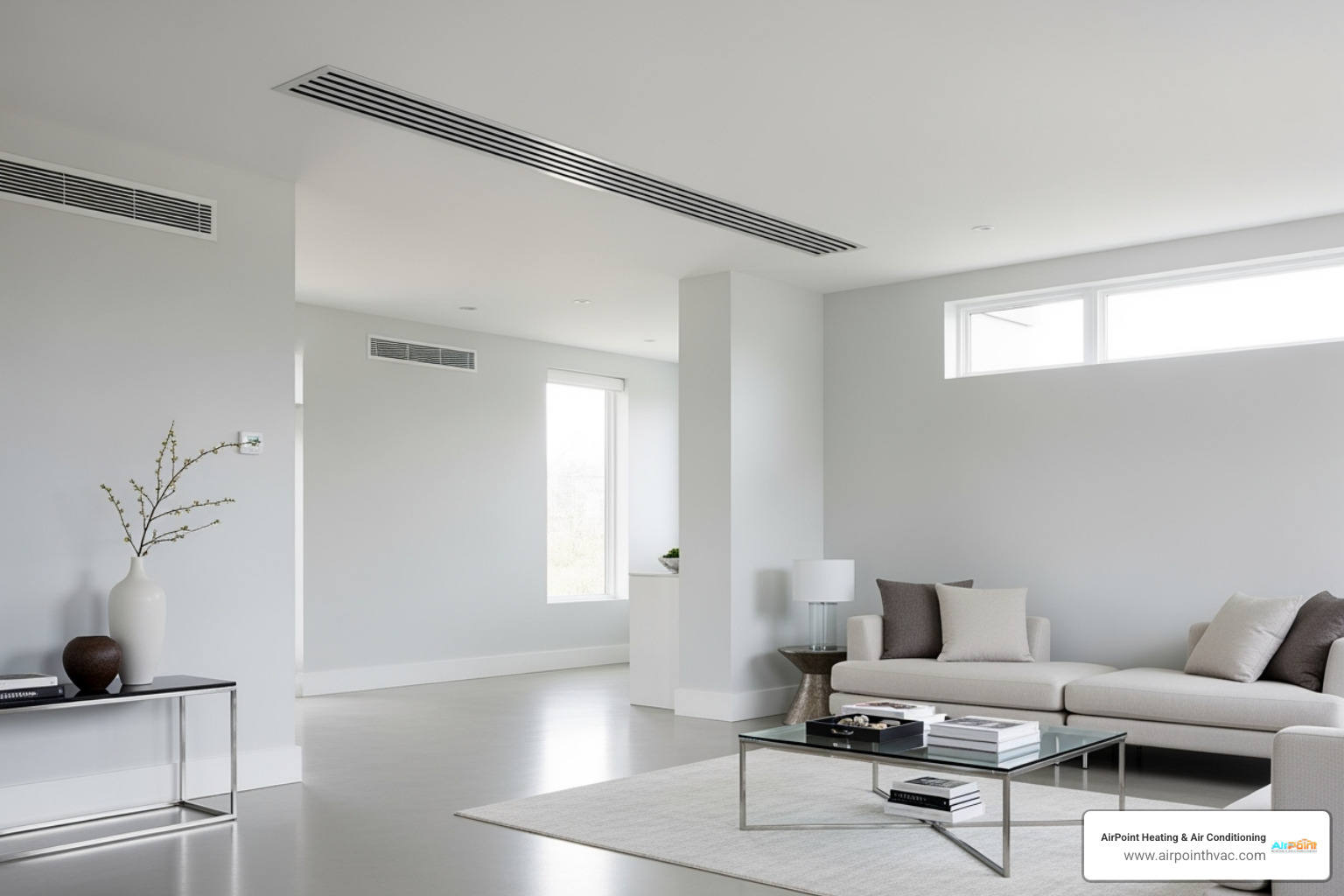
Simple Steps for Cleaner Indoor Air
When outdoor air quality isn't at its best, or simply to maintain a healthier home environment, there are many simple steps we can take to improve our indoor air:
- Keep Windows Closed on Bad Days: This might seem obvious, but if the outdoor AQI is high, closing windows and doors prevents outdoor pollutants from entering your home.
- Use High-Quality HVAC Filters: Your heating and air conditioning system is your first line of defense for indoor air. Using filters with a higher MERV (Minimum Efficiency Reporting Value) rating (like MERV 11 or higher, or even HEPA filters) can trap more airborne particles, including PM2.5, pollen, and pet dander.
- Run Your AC or Furnace Fan: Even if you don't need heating or cooling, running your system's fan can continuously circulate air through the filter, actively cleaning it.
- Avoid Indoor Sources of Pollution: This is a big one! Indoor activities like smoking, burning candles or incense, using chemical cleaners, and even cooking can release pollutants. Try to minimize these or ensure good ventilation when they are necessary.
- Clean Regularly: Dusting, vacuuming (with a HEPA-filtered vacuum), and washing bedding can significantly reduce indoor allergens and dust particles.
How Your HVAC System Can Help
Your home's heating, ventilation, and air conditioning (HVAC) system is not just for temperature control; it's a powerful tool for maintaining excellent indoor air quality. At AirPoint Heating & Air Conditioning, we know a thing or two about keeping your home's air fresh and clean.
- Proper Filtration: As mentioned, your HVAC system's filter is crucial. We can help you choose the right filter for your system and needs, ensuring it captures airborne contaminants effectively.
- Regular Maintenance: A well-maintained HVAC system runs more efficiently and filters air better. Regular tune-ups ensure your system is clean and functioning optimally, preventing dust and debris buildup that can re-circulate into your air.
- Air Purification Systems: Beyond standard filters, we can integrate advanced air purification systems directly into your HVAC ductwork. These systems use technologies like UV lights or ionization to neutralize bacteria, viruses, mold spores, and even odors, providing a superior level of indoor air cleanliness.
- Duct Cleaning Benefits: Over time, dust, allergens, and even mold can accumulate in your home's ductwork. When your system runs, these contaminants can be blown back into your living spaces. Professional duct cleaning can remove these buildups, significantly improving your indoor air quality and system efficiency.
We're here to help you explore modern HVAC solutions that do more than just heat and cool – they purify and refresh your home's air, contributing to a healthier living environment. Find how we can help you: Explore modern HVAC solutions.
Frequently Asked Questions about Huntington Beach's Air
Living in this beautiful coastal city, we hear a lot of questions about our local air quality. Here are the answers to help you breathe easy and stay informed about Huntington Beach air quality.
What is the biggest source of air pollution in Huntington Beach?
The honest answer? It's probably your daily commute and mine! Vehicle emissions are the biggest contributor to air pollution in our area, even though our overall air quality stays pretty good most of the time.
When we drive along the Pacific Coast Highway or any of our busy streets, our cars release nitrogen oxides and volatile organic compounds. These might sound scary, but they're basically byproducts of burning gasoline. The tricky part happens next – these emissions react with our abundant California sunshine to create ground-level ozone, which often shows up as the dominant pollutant in Huntington Beach.
We also see particulate matter (PM2.5) from various combustion sources, including all that traffic. It's a bit ironic that the cars we use to get to our beautiful beaches are also our main source of air pollution, but that's the reality of modern coastal living.
The good news? Even with all this traffic, our Huntington Beach air quality typically stays in the "Good" range thanks to our ocean breezes and ongoing regional efforts to reduce emissions.
How often should I check the air quality?
For most of us enjoying life in Huntington Beach, checking once a day is plenty – especially if you're planning outdoor activities like beach volleyball, jogging, or just spending time in your garden.
If you or someone in your family is in what we call a "sensitive group" – children, older adults, or anyone with asthma, heart conditions, or other respiratory issues – we'd recommend checking more frequently. Maybe a quick look in the morning and again before afternoon activities.
It takes just a few seconds to check your phone, and it can help you decide whether it's a great day for that beach run or if it might be better to hit the gym instead. Think of it like checking the weather before you get dressed – just another small step to keep your family comfortable and healthy.
Can the ocean breeze make the air quality better?
Absolutely! This is one of the best perks of living by the ocean, and it's a big reason why Huntington Beach air quality is generally so good.
Our ocean breeze acts like nature's air purifier. The consistent flow of air from the Pacific helps push stagnant, polluted air inland and replaces it with cleaner, fresher air from over the water. It's like having a giant natural ventilation system working for us 24/7.
You've probably noticed how much fresher the air feels on a breezy day compared to a still, hot afternoon. That's not just your imagination – the breeze is literally cleaning our air by dispersing pollutants before they can build up to unhealthy levels.
Of course, weather patterns can be complex. Sometimes regional winds can push pollution from inland areas toward the coast, or specific atmospheric conditions might still allow ozone to form even with a breeze. But most of the time, that refreshing sea air is working hard to keep our local air clean and breathable.
It's just another reason to appreciate living in this amazing coastal community!
Conclusion
Taking care of the air we breathe isn't just about checking numbers on an app – it's about creating a healthier, more comfortable life for you and your family. The good news is that Huntington Beach air quality consistently ranks as "Good," giving us the freedom to enjoy our beautiful coastal lifestyle most days of the year.
But knowledge is power. Understanding what an AQI of 31 means, recognizing when ozone levels might affect your morning jog, and knowing the difference between pollution symptoms and seasonal allergies helps you make smarter decisions every day.
Your home should be your safe haven, especially on those occasional days when outdoor air quality isn't perfect. Whether it's a wildfire smoke event or a high pollen day, having clean indoor air becomes crucial. Simple steps like using quality HVAC filters, running your system's fan, and keeping windows closed on poor air days can make a dramatic difference in how you feel.
At AirPoint Heating & Air Conditioning, we've seen how proper air filtration and regular HVAC maintenance transform homes. When your system is working efficiently with clean ducts and quality filters, you're not just staying comfortable – you're actively improving the air your family breathes every day.
Staying informed about air quality is an ongoing process. Check those daily forecasts, especially if you have sensitive family members. Adjust your outdoor plans when needed. And most importantly, take proactive steps to ensure your indoor air is always clean and fresh.
Clean air isn't a luxury – it's essential for health and comfort. From understanding outdoor air quality to optimizing your home's indoor environment, every step you take matters. Learn how clean air ducts contribute to better indoor air quality and find how small changes can make a big difference in your daily life.
Other Blogs
Latest Blog Posts

Rapid Relief: Same-Day Heating Fixes in Lake Forest, CA

Residential Heating Installation in Newport Coast: Stay Cozy All Year

Top 10 Best 24-Hour Heating Services in Long Beach, CA
Customer Testimonials










